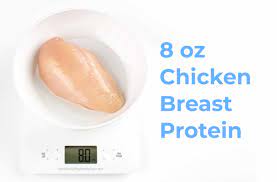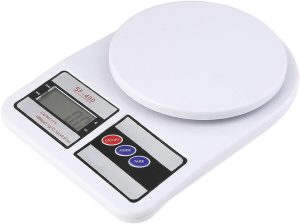
For a health-conscious luxurious, knowing the caloric substance of a staple protein like chicken breast is significant in keeping up a adjust between a nutritious count calories and a satisfying supper. Chicken, wealthy in muscle-building proteins and fundamental supplements, is the go-to for wellness devotees and regular foodies alike. But what are the calorie suggestions of reveling in an 8-ounce serving? Let’s plunge profound into the caloric composition of this flexible cut and how it impacts your dietary objectives.
Understanding the Base Caloric Content
To begin navigating the calorific landscape of an 8 oz chicken breast, it is vital to establish a baseline understanding of the caloric components inherent to this serving size.
The Nutritional Rubric
An 8 oz chicken breast, cooked from raw meat, offers:
- About 468 calories
- Over 90% protein content
This means that protein is the dominant macronutrient present in cooked chicken meat, with minimal levels of fat and carbohydrates.
Calorific Constituents
Per 8 oz serving, the caloric makeup usually falls within:
- Approximately 18 grams of fat
- Less than 1 gram of carbohydrates
- Over 68 grams of protein
Thus, the bulk of chicken breast calories come from its protein content, followed by fats, with an insignificant contribution from carbohydrates.
The Impact of Chicken Skin
The golden-brown, crispy chicken skin – often the coveted part of a chicken roast – may be adding more to your daily caloric intake than you perceive.
The Added Caloric Load
Eating 8 oz of chicken breast with skin increases its caloric content by approximately 150 calories. This suggests that for maintaining or losing weight, opting for skinless chicken is the prudent choice.
Nutritional Composition with Skin
An 8 oz chicken breast with skin comprises:
- Over 28 grams of fat
- Approximately 32 grams of protein
- Less than 1 gram of carbohydrates
The increased fat content with the skin demonstrates a significant deviation in caloric and nutritional profiles. Thus, conscientious consumers should weigh the pleasure of the skin against the additional calories it brings.
Cooking Methods and Caloric Implication
How you prepare your chicken profoundly influences its caloric content. Grilling, baking, or boiling are calorie-conscious methods compared to frying or deep-frying.
Frying vs. Baking
The difference in caloric content between an 8 oz fried chicken breast and a baked one is around 100 calories. Frying requires the addition of cooking oil, which significantly elevates the final caloric count.
Marination and Safeguarding Taste
Using low-calorie marinades, such as lemon juice or vinegars, not only enhances the flavor but also keeps the 8 oz chicken breast a healthier option. Conversely, sugary or creamy marinades contribute additional calories, sometimes up to 100 or more.
Caloric Counterbalance
Understanding the caloric potency of an 8 oz portion of chicken breast allows you to balance the rest of your meal accordingly.
Pairing with Vegetables and Grains
A meal featuring an 8 oz chicken breast can be balanced by adding high-fiber vegetables and whole grains, enriching it nutritionally while maintaining a caloric equilibrium.
Fats and Flavoring
Incorporating healthy fats like olive oil or avocados in the sides can supplement the dish with essential nutrients without an adverse effect on the overall caloric intake.
Chicken Breast in Your Meal Plan
In most meal plans, portion control is a common denominator. Understanding the caloric content of your 8 oz chicken breast serving is pivotal.
The Role in Weight Loss
For individuals aiming to shed or maintain weight, the 8 oz chicken breast’s calorie contribution must be factored into their daily dietary limits.
Adaptation to Dietary Needs
Whether for muscle gain or weight maintenance, the versatility of chicken breast allows personalization in a dietary regimen while staying within the caloric bounds.
Nutritional Benefits Beyond Calories
Calories tell only part of the story. Understanding the broader nutritional value of an 8 oz chicken breast enriches your dietary decision-making.
Protein – The Muscle Builder
The high protein content in chicken breast is pivotal for muscle development, cellular repair, and a healthy immune system.
Essential Nutrients
Chicken breast may be a great source of selenium, niacin, and vitamin B6 – fundamental for metabolic work, brain wellbeing, and DNA union. It too contains little sums of press and zinc, critical for oxygen transport and resistant upgrade.
Addressing Common Caloric Misconceptions
The dialogue around calories is not always transparent. It is important to dispel some common misconceptions.
Caloric Implications of Organic and Free-Range
While organic and free-range chicken may offer additional health benefits, their caloric differences from conventionally raised chicken are negligible. The packaging and preparation methods often contribute more to caloric load than these distinctions.
Impact of Antibiotics and Hormones
The use of antibiotics and hormones in chicken rearing has minimal direct caloric impact on the meat itself. However, there are broader health considerations influencing consumer choices.
Sustainability and Ethical Implications
While the caloric content of an 8 oz chicken breast is tangible, there are intangible factors to consider.
Ethical Sourcing
Choosing ethically sourced chicken supports better practices in the food industry, improving animal welfare and reducing environmental impacts.
Environmental Footprint
The environmental cost of chicken production should not be overlooked, and efforts to support sustainable practices are encouraged.
Culinary Creativity with Caloric Consciousness
Incorporating knowledge about calories in 8 oz chicken breast can inspire inventive culinary creations without compromising health goals.
Flavor with Herbs and Spices
Experimenting with a spectrum of herbs and spices can elevate the taste of chicken, minimizing the need for high-calorie additions.
Chicken Breast as an Ingredient
Chopped, shredded, or cubed, chicken breast can be used in various recipes, allowing for diverse meal options within a controlled caloric range.
The Future of Chicken in Diet Culture
As diet trends evolve, chicken remains a steady contender. From keto to paleo, its adaptable nature aligns with diverse dietary preferences.
Chicken Breast in High-Fat Diets
For those embracing high-fat, low-carb diets, 8 oz chicken breast can be a lean and satiating protein base.
Versatility in Eating Styles
The high-protein, low-calorie profile of chicken breast adjusts well with a range of eating styles, guaranteeing its proceeded significance in eat less arranging.
Conclusion
Understanding the caloric substance of an 8 oz chicken breast goes past simple numbers; it is around making educated choices that reflect your dietary objectives, moral contemplations, and culinary inclinations. Increasing in value the subtleties of chicken breast nourishment engages you to appreciate this substantial liberality with more profound mindfulness, guaranteeing that your wellbeing and taste are in culminate concordance.
Read also: Stepping Into the World of Healthcare: A Comprehensive Guide on How to Become a Medical Assistant







